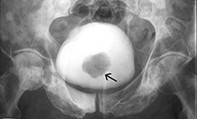Peer Reviewed
Feature Article Urology
Bladder cancer: assessment and management
Abstract
A common urological cancer, bladder cancer has a broad spectrum of aggressiveness and risk. While low grade noninvasive bladder cancers rarely progress to invasive or metastatic disease, high grade lesions have a much greater propensity to invade the bladder wall and ultimately metastasise.
Key Points
- Patients with transitional cell carcinoma (TCC) of the bladder usually present with painless macroscopic or microscopic haematuria.
- Patients may also present with irritative voiding symptoms such as urinary frequency and urgency.
- Patients with TCC of the bladder are also at risk of renal and ureteric TCC.
- Initial investigations comprise urine culture and cytology, full blood count, coagulation studies, and serum urea, electolytes and creatine, plus intravenous pyelography or computed tomography urography.
- Cystoscopy is mandatory in all cases of gross haematuria and many cases of microscopic haematuria.
- Patients with noninvasive TCC can usually be managed endoscopically (resection or fulguration) with the addition of intravesical therapies.
- Muscle-invasive TCC is a dangerous disease that must be managed aggressively by either cystectomy or radiation therapy.
Purchase the PDF version of this article
Already a subscriber? Login here.

